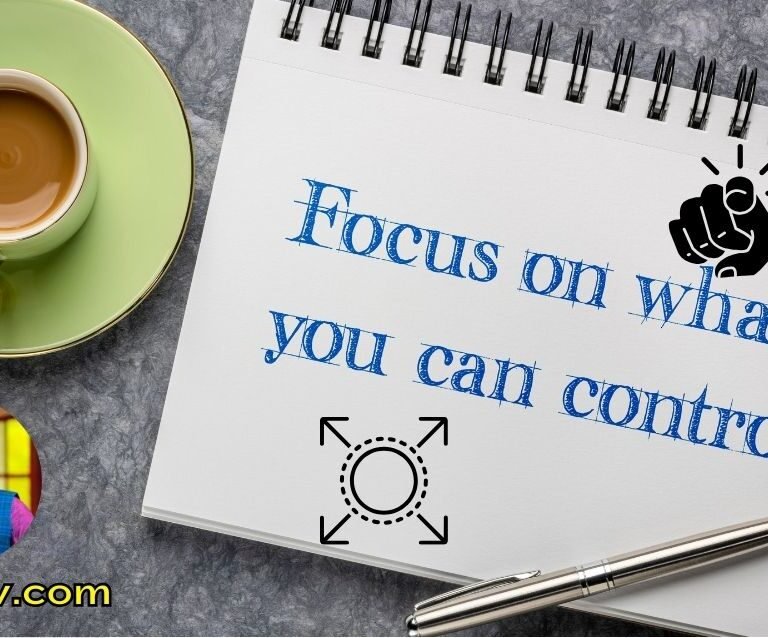Visualization
Visualization is a cognitive process that involves creating mental images of desired outcomes or goals. This technique has garnered significant attention in various fields, including psychology, sports, and personal development, as it serves as a powerful tool for enhancing performance and achieving ambitions. By picturing oneself achieving a specific goal, individuals can leverage the mind’s ability to influence thoughts, emotions, and behaviors, thus aligning them toward success. The process of visualization encompasses more than just daydreaming; it requires focus, intention, and clarity about what one aims to achieve.
The connection between visualization and mental clarity is paramount. When individuals engage in visualization, they are encouraged to articulate their goals in specific detail, which aids in crystallizing their aspirations. This clarity in purpose not only boosts motivation but also streamlines decision-making processes, as individuals can better identify the steps necessary to reach their objectives. Moreover, visualization fosters a sense of preparedness, allowing individuals to mentally rehearse various scenarios they may encounter along their journey. This mental rehearsal can cultivate confidence, reduce anxiety, and enhance resilience in the face of challenges.
The applications of visualization extend across numerous domains, from enhancing athletic performance to improving academic results or advancing in one’s career. Athletes, for instance, often utilize visualization techniques to mentally practice their routines, which can lead to improved physical execution. Similarly, professionals might visualize themselves navigating difficult conversations or delivering impactful presentations, bolstering their ability to perform effectively under pressure. Through this proactive mental engagement, individuals can significantly increase their likelihood of success, making visualization a vital component of goal achievement.
The Science Behind Visualization
The practice of visualization is grounded in several scientific principles, particularly those associated with neuroplasticity, the workings of the subconscious mind, and brain activity related to motivation and action. Neuroplasticity, the brain’s ability to reorganize itself by forming new neural connections, plays a crucial role in the effectiveness of visualization techniques. When individuals visualize achieving their goals, they stimulate specific neural pathways. These pathways become more robust with repeated practice, enhancing one’s capacity to execute the necessary actions to reach the desired outcomes.
Research indicates that mental imagery can activate the same brain regions involved in actual physical activity. For example, athletes often use visualization to enhance their performance by imagining themselves successfully completing their routines. Studies show that when individuals visualize a specific action, such as shooting a basketball, the motor cortex—an area associated with movement—lights up as if they were performing the action. This phenomenon illustrates that visualization engages both the cognitive and physical aspects of skill development, thus contributing to greater success in actual performance.
Furthermore, the subconscious mind plays a pivotal role in how visualization affects goal achievement. The subconscious is responsible for processing vast amounts of information outside of our conscious awareness, which can include habits, perceptions, and belief systems. By consistently visualizing success, individuals can influence their subconscious, aligning their beliefs and behaviors with their aspirations. This alignment often leads to increased motivation and resilience, as the mind begins to perceive the goal as attainable. The cumulative effects of visualization can yield significant results over time, making it a powerful tool for anyone looking to realize their ambitions.
Benefits of Visualization for Goal Setting
Visualization serves as a powerful cognitive strategy in the domain of goal setting, offering a myriad of benefits that can significantly enhance an individual’s journey toward achieving their objectives. One of the primary advantages of this technique is the enhanced motivation it provides. When individuals visualize their goals, they can create a mental image of success, which fuels their drive and commitment. This vivid representation of desired outcomes encourages persistence, even in the face of obstacles.
Improved focus is another notable benefit of visualization. By mentally rehearsing the steps required to reach their goals, individuals can concentrate their efforts and resources more effectively. This enhanced focus allows them to prioritize tasks, eliminating distractions and enabling more streamlined progress. Consequently, visualization acts as a guiding beacon, directing energy toward goal-oriented activities.
Increased confidence also emerges as a significant advantage of employing visualization techniques. When individuals repeatedly visualize their success, they begin to internalize a belief in their capabilities. This heightened self-efficacy plays a crucial role in overcoming self-doubt and fosters resilience against setbacks. Individuals who confidently visualize their achievements are more likely to take decisive actions that align with their goals.
Moreover, visualization aids in crafting a clear roadmap for success. By outlining specific strategies and obstacles through mental imagery, individuals can develop a systematic approach to their goals. This strategic planning allows for the anticipation of challenges and the formulation of contingency measures, ultimately leading to more effective goal navigation.
Overall, the benefits of visualization in goal setting are profound, impacting motivation, focus, confidence, and strategic planning. By integrating this practice into their routine, individuals can unlock the potential to not only set ambitious goals but also to achieve them with greater efficacy.
Techniques for Effective Visualization
Effective visualization is a powerful tool that can significantly enhance goal achievement. Various techniques can facilitate this mental imagery process, allowing individuals to clarify their aspirations and heighten motivation. One widely recognized method is guided imagery, which involves using a narrative or audio to lead participants into a relaxed state where they can vividly imagine their goals being fulfilled. This technique not only helps in creating a mental picture but also in reducing anxiety, as individuals can mentally rehearse successful outcomes and cultivate a positive mindset.
Another popular technique is the creation of vision boards. By gathering images and words that represent specific goals, individuals can assemble a tangible board that serves as a visual reminder of what they are working towards. Placing the vision board in a prominent location can reinforce focus and motivation daily, prompting consistent reflection on the desired achievements. Vision boards harness the power of imagery to transform abstract goals into concrete, desirable outcomes that resonate personally.
Meditation is yet another effective approach that facilitates visualization. Practicing mindful meditation allows individuals to clear their minds, enhancing their ability to concentrate on their goals without distractions. In this state, one can visualize achieving specific benchmarks and even experience the emotions tied to such accomplishments, making the process feel more attainable.
Lastly, journaling provides a valuable opportunity to articulate thoughts and feelings related to one’s goals. By writing down aspirations, reflecting on progress, and noting visualized scenarios, individuals reinforce their intentions and enhance their mental imagery. Regular journaling promotes self-awareness and allows for a review of past successes, which can further energize the pursuit of future goals. Implementing these techniques can significantly boost the effectiveness of visualization, making dreams more achievable.
Aligning Actions with Visualization
To effectively utilize mental imagery for achieving goals, it is essential to align everyday actions and decisions with the aspirations one visualizes. This alignment not only strengthens commitment to the goal but also enhances the likelihood of success. Proactive thinking plays a crucial role in this process. By envisioning the desired outcome, individuals can clarify their objectives and motivate themselves towards achieving those outcomes. It creates a mental roadmap guiding actions that are congruent with the envisioned success.
Visualizing success entails a focused imagination that provides clarity on what should be accomplished. Individuals who take the time to create detailed mental images of their targets can better identify the specific, actionable steps required to reach those targets. This preparatory step fosters awareness of potential obstacles and empowers individuals to strategize proactively. For instance, an athlete picturing a winning performance will not only dream of lifting the trophy but also revise their daily training routine, diet, and mental preparation methods in accordance with that vision.
Moreover, aligning actions with visualized goals leads to deliberate behavioral changes. When individuals have a clear mental image of success, they are more likely to engage in behaviors that reinforce their commitment to achieving that vision. This may involve prioritizing certain tasks over others or adopting new habits that support their objectives. Continuous reinforcement through visualization fosters a growth mindset, encouraging individuals to view challenges as opportunities for growth rather than setbacks. As such, proactive thinking, when combined with visualization, becomes a powerful catalyst for purposeful action and sustained progress.
Ultimately, the intersection of visualization and action allows individuals to maximize their potential, ensuring that each decision made and action taken is in direct alignment with their envisioned success.
Overcoming Challenges in Visualization
Visualization is a powerful tool for achieving success, but individuals often encounter various challenges that can hinder their ability to effectively use this technique. Common obstacles include self-doubt, distractions, and a lack of clarity regarding one’s goals. These barriers can prevent individuals from fully engaging with the process of mental imagery and can diminish the impact of their visualization practice.
Self-doubt is a significant hindrance that many face when attempting to visualize their goals. This internal critic may prompt individuals to question their capabilities, leading to stress and anxiety. To combat self-doubt, it is essential to cultivate a positive mindset. Practicing affirmations and focusing on past successes can help shift one’s perspective and build confidence. By acknowledging previous achievements, individuals can create a more supportive inner dialogue, which is crucial for effective visualization.
Distractions also pose a challenge in the visualization process. The modern world is filled with various stimuli that can divert attention away from focused mental imagery. For successful visualization, it can be helpful to establish a dedicated time and space, free of interruptions. Creating a calming environment, devoid of digital distractions, can facilitate deeper engagement with one’s visualization practice.
A lack of clarity can further impede the process of effective visualization. When goals are ambiguous or poorly defined, it becomes challenging to create vivid mental images. To overcome this challenge, it is beneficial to take the time to articulate specific and measurable goals. Employing techniques such as journaling or mind mapping can aid in elucidating one’s aspirations. By clarifying and refining objectives, individuals can enhance the effectiveness of their visualization efforts.
In summary, while obstacles such as self-doubt, distractions, and lack of clarity can impede visualization, adopting strategies to address these challenges can lead to improved practice. Building confidence, creating a conducive environment, and defining goals are crucial steps toward harnessing the true potential of mental imagery in realizing success.
Real-Life Success Stories
Visual imagery has been employed by numerous individuals across different domains to foster achievement and realize their full potential. In the realm of sports, Olympic athlete Michael Phelps stands out as a prime example. Phelps utilized visualization techniques to prepare mentally for races, envisioning every detail from the starting block to the finish line. This mental rehearsal allowed him to mitigate anxiety and enhance his performance, ultimately contributing to his remarkable tally of 23 Olympic gold medals.
In the field of entrepreneurship, the story of Jim Carrey showcases how mental imagery can play a pivotal role in achieving professional goals. Early in his career, Carrey wrote himself a check for ten million dollars for “acting services rendered,” and he dated it for Thanksgiving 1995. Through visualization and unwavering belief in his potential, Carrey eventually received that amount for his role in the film “Dumb and Dumber,” demonstrating the profound impact of picturing one’s success.
Furthermore, in the world of health and wellness, neuroscience research indicates that visualization can aid rehabilitation and recovery. Consider the experience of a woman who suffered a traumatic injury. Through consistent visualization of performing exercises, she not only boosted her motivation but also accelerated her recovery process. Studies have shown that patients who engaged in mental imagery alongside physical therapy displayed improved outcomes, reinforcing the power of the mind in fostering physical healing.
These stories exemplify the effectiveness of mental imagery as a practical technique in various fields. Whether it be in sports, entertainment, or health, visualization has proven to be a potent tool. By employing this technique, individuals can overcome obstacles and enhance their chances of success, reiterating its value in realizing one’s goals.
Integrating Visualization into Daily Life
Implementing visualization techniques into daily routines can significantly enhance one’s ability to achieve personal and professional goals. To begin with, it is essential to dedicate a specific time each day for visualization exercises. This could be in the morning, to set a positive tone for the day, or in the evening, to reflect on the day’s experiences. Setting aside as little as ten to fifteen minutes can suffice, allowing individuals to focus their minds and channel their energy effectively towards their aspirations.
Creating an environment conducive to visualization is also crucial. A quiet and comfortable space, free from distractions, can enhance concentration and effectiveness during visualization sessions. Consider using soft lighting, calming scents, or relaxing background music to foster a peaceful ambiance. These elements can help in crafting a mental image that feels more dynamic and realistic, thus making the visualization process more impactful. It may also be helpful to keep a visualization journal, where individuals can jot down their goals, dreams, and the feelings associated with them. This practice not only reinforces the visualization process but serves as a motivational tool to track progress.
Consistency is key in integrating visualization as a regular part of daily life. Practicing visualization techniques should be viewed as a habit, similar to exercising or meditation. By establishing a routine, individuals can gradually strengthen their mental imagery skills, making the process more natural over time. It is important to approach these sessions with an open mind, focusing on the journey rather than immediate results. As one continues to engage in visualization, the mental images will become clearer, enhancing their ability to manifest those aspirations into reality.
The Journey to Success Through Visualization
In the journey toward achieving personal and professional goals, the concept of visualization emerges as a potent tool for enhancing success. The practice of mental imagery allows individuals to create a clear picture of their desired outcomes, cultivating a sense of motivation and determination. By engaging in regular visualization exercises, one can not only outline goals but also simulate the processes required to achieve them, leading to increased self-efficacy and resilience. This method relies heavily on the mind’s ability to influence physical performance, transforming abstract aspirations into tangible realities.
Moreover, the psychological benefits of visualization cannot be overstated. Imagining success can foster a deeper belief in one’s capabilities, thus reducing anxiety and enhancing focus. The repetition of these mental images creates a neural pathway that aids in actualizing one’s ambitions. By envisioning the steps necessary to reach these goals, individuals are better equipped to navigate challenges and remain committed to their pursuits. This visualization practice offers a roadmap for success, guiding the mind and body toward the identification and execution of effective strategies and behaviors.
Embracing the power of mental imagery is not merely a passive exercise; it requires introspection, commitment, and an openness to self-improvement. For those aspiring to achieve their goals, integrating visualization techniques into daily routines can prove transformative. As we embark on our personal journeys, it is essential to recognize the significant impact that visualization can have on our path to success. In conclusion, the practice of mental imagery stands as a valuable ally in achieving our dreams, urging individuals to harness its potential for realizing their fullest capabilities.









